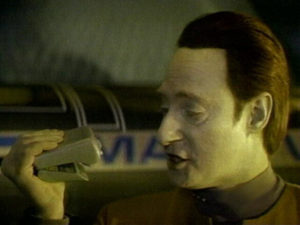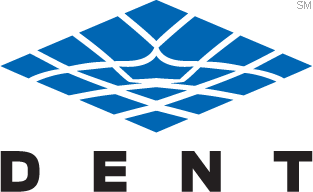Putting a Dent in the Future with Relatable Objects
 Here at Dent HQ, our favorite relatable machine is by far Brent Spiner's legendary android Data from Star Trek: The Next Generation. With a positronic brain and thousands of minute servos in his face and neck, Mr. Data mimicked human thought, facial expressions, and body language. In later episodes and the ST: TNG film series, Data received an emotion chip that allowed him to not only mimic, but actually experience the breadth of human existence.While an human-equivalent artificial life form like Mr. Data is still a thing of the future, we are already living in a world of devices that relate to us on our terms. The New York Times cites a few potent examples:
Here at Dent HQ, our favorite relatable machine is by far Brent Spiner's legendary android Data from Star Trek: The Next Generation. With a positronic brain and thousands of minute servos in his face and neck, Mr. Data mimicked human thought, facial expressions, and body language. In later episodes and the ST: TNG film series, Data received an emotion chip that allowed him to not only mimic, but actually experience the breadth of human existence.While an human-equivalent artificial life form like Mr. Data is still a thing of the future, we are already living in a world of devices that relate to us on our terms. The New York Times cites a few potent examples:
YOUR coffee maker or camera may already have some of these elements, responding automatically to shut themselves off or follow a sequence of timed commands (wait 30 seconds, take a picture; at 6 a.m. start brewing, etc.) and the next generation of products will be only more sophisticated in this regard.Whereas designers typically use form, color and materials to make an object express some human element (a drill handle may have a pattern that looks aggressive, a toaster might have knobs and dials that seem friendly), we’re entering a time when sound, light and movement are equally important parts of the creative palette. Everyday objects whose expressive elements have long been static will now glow, sing, vibrate and change position at the drop of a hat....For example, colored lights on a robotic vacuum cleaner will tell us what’s going on inside: green, slow pulsing indicates “All systems go!”; rapid red flashing pleads “Help! Something is amiss here.” A jubilant melody at the end of a washing machine cycle says, “Everything went well and your clothes are ready!” When a video conferencing webcam in an office lowers its head, it’s saying: “Bye! Going to sleep now.” These animated behaviors blend together and it’s human nature to read them as emanating from a living entity.
This universe-denting trend can best be summed up by Steve Jobs himself, when he said, "design is not just what it looks like and feels like. Design is how it works."This, in a nutshell is how Jobs solved the innovator's dilemma. He realized that the old model of product development wherein an engineer would come up with some new technology or new way to apply existing technology, and then the business people would come in and figure out how to make the thing profitable was completely backwards.He realized that innovators have to start with a user need and design something to meet that need based on the capabilities you have or could reasonably build. Jobs was notorious for asking Apple's designers and engineers to do the "impossible," like building circuit boards that fit with the industrial design that met the user's needs, instead of forcing the user to buy an object that didn't fit them just to accomodate existing technology.There are those naysayers who claim that this approach will adversely impact the bottom line, but you need look no further than Apple's own astronomical profitability to invalidate that argument.At our first conference in Sun Valley next month, we'll dig into the practical reality of making this switch from engineering-focused to human-focused product development with innovators and business leaders who have already done it, including Jobs' Pixar co-founder Alvy Ray Smith.
